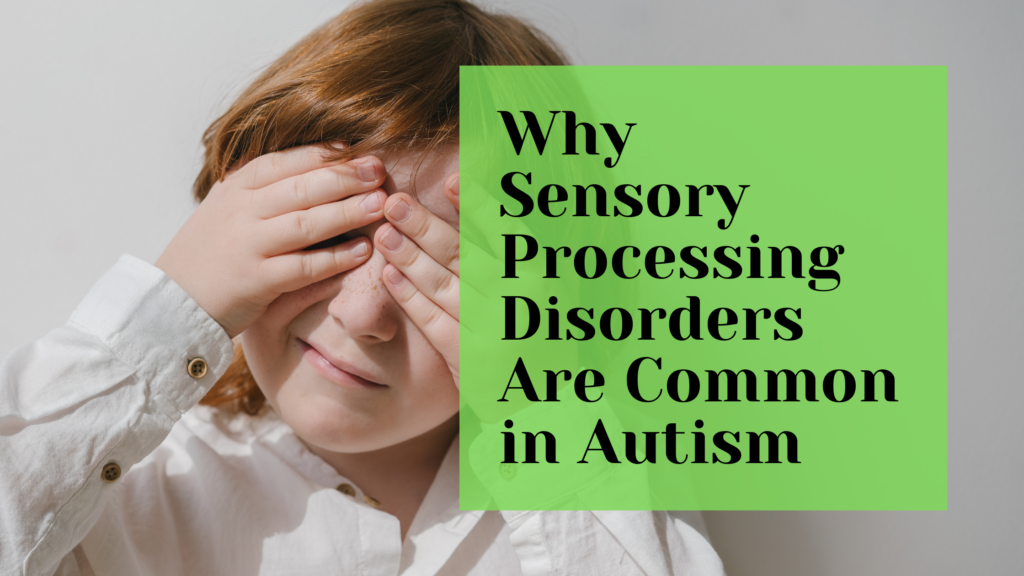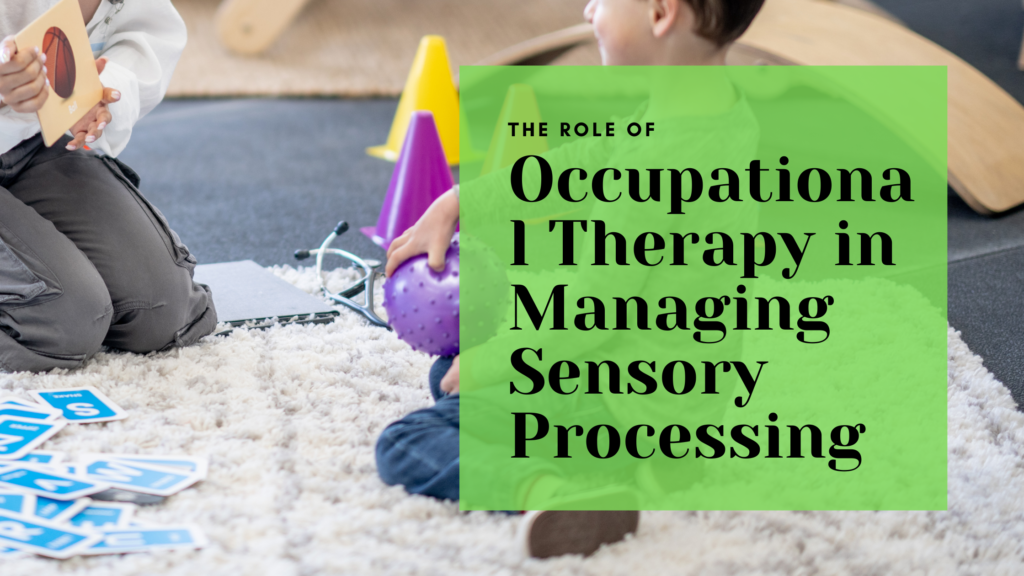I. Introduction
Creating a sensory-friendly environment in classrooms is essential for supporting autistic students. Sensory processing issues, common in children with autism, can significantly impact their ability to learn and behave in a typical classroom setting. These students may become easily overwhelmed by noises, lights, textures, or other sensory stimuli, making it difficult for them to focus and feel comfortable.
In this article, we will explore practical tips and strategies to help teachers and school staff set up sensory-friendly classrooms. These adjustments can make a big difference in the well-being and success of autistic students.
II. Understanding Sensory Processing in Autistic Students
Sensory processing issues occur when the brain has trouble interpreting and responding to sensory information, such as sound, light, or touch. For autistic students, this can lead to overstimulation or, in some cases, a need for more sensory input. These sensory challenges can make everyday classroom activities overwhelming or stressful.
Common sensory difficulties for autistic students include sensitivity to loud noises, bright lights, certain textures, or uncomfortable movement. Without proper support, these sensory challenges can lead to anxiety, meltdowns, or an inability to focus on learning. That’s why creating a classroom environment that minimizes sensory overload is critical. A well-designed sensory-friendly classroom helps students feel more comfortable, enabling them to focus and engage in learning.
III. Key Elements of a Sensory-Friendly Classroom
Lighting
Bright or flickering lights can overstimulate autistic students, making it hard for them to concentrate. Consider replacing harsh fluorescent lighting with natural light, dim lighting, or lamps that create a softer glow. Some teachers also use light filters or adjust the brightness of overhead lights to create a more soothing environment.
Noise Management
Classrooms can be noisy environments, but too much noise can distract and overwhelm autistic students. Reducing noise can be as simple as adding carpets and soft furnishings to absorb sound. Noise-cancelling headphones are another great tool that allows students to block out distracting background noise, helping them stay focused.
Seating Arrangements
Flexible seating options can help students regulate their sensory input and improve their focus. Providing sensory cushions, standing desks, or bean bags allows students to choose seating that feels comfortable to them. Having different seating options also helps students manage their movement needs and find the best way to concentrate.
Tactile-Friendly Environment
For students who are tactile-seeking, incorporating textured objects and materials into the classroom can provide comfort. Items like sensory bins, fidget tools, and soft fabrics give students an outlet for their sensory needs while keeping them calm and engaged.
Visual Supports
Clear visual supports help autistic students understand the daily routine and reduce anxiety. Visual schedules, charts, and clear labeling of classroom areas or activities provide a predictable structure, allowing students to know what to expect throughout the day.
IV. Creating a Sensory Break Area or Quiet Corner
The Importance of Sensory Breaks
Sensory breaks are essential for autistic students to self-regulate and prevent meltdowns. When a student feels overwhelmed, taking a short break in a quiet space allows them to recharge and return to learning with a clearer mind.
Setting Up a Quiet Corner
A designated quiet corner in the classroom can serve as a sensory break area. This space should include soft seating, like bean bags or cushions, and calming items such as noise-cancelling headphones and soothing visual aids like bubble tubes or soft lighting.
Tools for the Quiet Corner
Include sensory tools like weighted blankets, stress balls, or calming objects in the quiet corner. These items help students manage sensory overload and provide them with a calming place to relax.
V. Incorporating Sensory-Friendly Classroom Activities
Movement Breaks
Incorporating movement breaks throughout the day helps students reset and refocus. Simple activities like stretching, yoga, or a short walk around the room can release pent-up energy and provide sensory input that helps students stay focused.
Hands-On Learning
Tactile learning experiences, like building with blocks, working with playdough, or using textured materials for art projects, give students an outlet for their tactile needs while keeping them engaged in the lesson.
Sensory Play
Sensory play activities like sensory bins, water play, or sand play can help students relax while exploring different textures. These activities are fun and provide a calming effect, which is important for keeping autistic students focused and engaged.
VI. Supporting Individual Sensory Needs in the Classroom
Personalized Sensory Plans
Each autistic student has unique sensory needs. Working with occupational therapists to create personalized sensory plans for each student ensures that their individual sensory profile is considered. These plans can guide teachers on how to support each student’s sensory preferences.
Tracking Sensory Triggers
Teachers should observe and track sensory triggers that cause stress or meltdowns for each student. Once identified, the classroom environment can be adjusted to minimize these triggers. For example, if a student is sensitive to loud sounds, ensuring they sit in a quieter part of the room or providing noise-cancelling headphones can help.
Flexible Accommodations
Allowing flexible accommodations for autistic students is important. This may include allowing them to wear noise-cancelling headphones, sit in quiet zones, or take frequent sensory breaks. These accommodations help students feel more comfortable and reduce anxiety.
VII. Using Sensory Tools to Enhance Learning
Fidget Tools and Sensory Toys
Fidget tools and sensory toys can be highly beneficial for autistic students, helping them stay focused during lessons. Items like stress balls, fidget spinners, and squeeze toys offer tactile stimulation and help regulate sensory input without distracting others.
Weighted Items
Weighted lap pads, vests, or blankets help students feel grounded and focused. These items provide deep pressure, which has a calming effect and can improve attention during class activities.
Visual and Auditory Aids
Visual schedules help students follow the daily routine, while auditory aids, such as white noise machines, can create a more focused and less distracting environment. These tools reduce sensory distractions and make it easier for autistic students to engage in learning.
VIII. Collaborating with School Staff and Parents
Training and Awareness for Teachers
Teachers and school staff need proper training on sensory processing challenges and the specific needs of autistic students. By raising awareness, schools can create a more inclusive and supportive learning environment.
Working with Occupational Therapists
Occupational therapists play a key role in helping assess students’ sensory needs and providing strategies for classroom accommodations. Teachers can work closely with these professionals to ensure the classroom environment meets each student’s sensory profile.
Parental Involvement
Collaboration with parents is essential to ensure that the sensory strategies used in school are consistent with those used at home. Regular communication between parents and teachers helps maintain a unified approach to supporting each student’s sensory needs.
IX. Maintaining a Flexible and Adaptable Classroom Environment
Monitor and Adjust
It’s important to continually assess the effectiveness of sensory-friendly strategies and make adjustments as needed. Teachers should observe how students respond to sensory tools and activities and be prepared to adapt the classroom setup based on these observations.
Adapting to Different Sensory Profiles
Each autistic student’s sensory profile may change over time or in different settings. Teachers need to remain flexible and responsive to these changes by adjusting sensory accommodations accordingly.
Incorporating Student Feedback
Asking students for feedback on their comfort with sensory tools and environments is a great way to fine-tune the classroom setup. Students often have valuable insights into what works best for them.
X. Conclusion
Creating a sensory-friendly classroom benefits autistic students by improving focus, reducing anxiety, and providing a supportive learning environment. By incorporating sensory tools, flexible seating options, and calming areas, teachers can help students feel more comfortable and engaged in the classroom.
A flexible and adaptable classroom that meets the diverse sensory needs of autistic students is key to their success. Teachers and school staff should continue exploring new strategies and tools to create the best possible classroom experience for autistic students. With the right support, these students can thrive in their learning environment.


